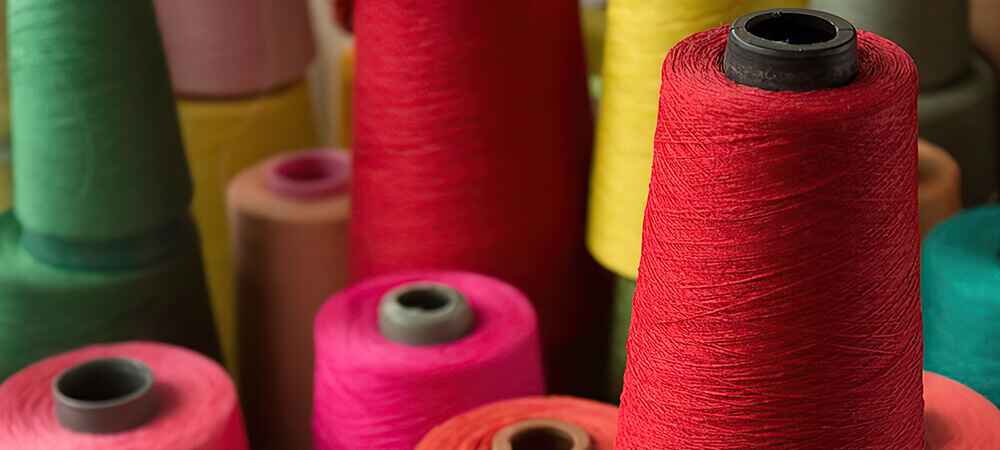


Explore 2025’s top innovations in recycled cotton yarn—AI sorting, closed-loop systems, hybrid blends & more.
As the global textile industry pivots toward circularity, recycled cotton yarn is emerging as a hero of sustainable innovation. With rising demand from eco-conscious consumers and regulatory pressure on fashion brands to reduce waste, manufacturers are investing heavily in advanced recycling techniques to make cotton yarn production cleaner, smarter, and more efficient.
In 2025, the recycled cotton yarn manufacturing landscape looks drastically different from even a few years ago. From AI-based fiber sorting to chemical recycling and waterless dyeing, innovations are reshaping how yarn is made — and how sustainable it can truly become.
Let’s explore the top 7 groundbreaking innovations that are pushing this industry forward.
Manual sorting of textile waste has long been one of the biggest hurdles in recycled yarn manufacturing. In 2025, many recycled cotton yarn manufacturers have adopted AI-powered sorting machines equipped with optical sensors and machine learning algorithms.
These systems can:
Automatically identify cotton content in mixed textile waste
Separate colored and white fibers with extreme precision
Reduce contamination from synthetic materials
The result? Higher purity cotton feedstock, leading to better yarn strength, uniformity, and quality — all while reducing labor costs and human error.
Traditional mechanical recycling can degrade cotton fiber quality, especially after multiple cycles. However, the latest low-impact shredding and carding technologies are changing the game.
These next-gen systems:
Preserve fiber length better than older machines
Minimize lint loss during processing
Use renewable energy sources, such as solar or wind, for power
This significantly improves the environmental performance and end-product consistency, allowing recycled cotton yarn suppliers to meet stricter quality benchmarks without compromising sustainability.
A major innovation in 2025 is the rise of color-preserved blending, which eliminates the need for water-intensive dyeing altogether.
How it works:
Pre-colored cotton scraps are sorted by hue
These are blended to create new shades, such as melange and pastel tones
No additional chemical dyes are required
This method reduces water use by up to 95%, cuts down on toxic dye discharge, and creates unique, eco-friendly fabric tones that appeal to sustainable fashion brands.
Today’s buyers want to know where their yarn comes from. In response, recycled cotton yarn manufacturers have begun using blockchain-based systems to ensure complete transparency and traceability.
Benefits of blockchain integration:
Each bale of recycled yarn is tagged and tracked through the supply chain
Buyers can verify the origin of raw materials
Ensures GRS (Global Recycled Standard) and other certification compliance
This digital trail adds credibility to brands and strengthens consumer trust in sustainable sourcing claims.
Another breakthrough in 2025 is the strategic blending of recycled cotton with other sustainable fibers like:
TENCEL™
Recycled polyester (rPET)
Hemp or bamboo viscose
This innovation:
Enhances yarn durability and elasticity
Maintains softness and breathability
Makes recycled cotton yarn suitable for more demanding applications like denim, upholstery, and workwear
Hybrid blending has enabled recycled cotton yarn suppliers to expand their product range while maintaining sustainability.
The future of sustainable textile production lies in closed-loop systems — and recycled cotton yarn is leading the way.
Key components of a closed-loop setup include:
Zero-liquid discharge (ZLD) water treatment
In-house recycling of yarn waste and offcuts
Renewable energy-powered spinning and carding machinery
By keeping materials and resources within the system, these facilities drastically lower the carbon footprint, cut operational costs, and set a new benchmark for sustainable yarn manufacturing.
In 2025, many recycled cotton yarn suppliers have embraced digital manufacturing models, including:
Virtual sampling
Real-time inventory forecasting
Customized yarn spinning based on specific client needs
This shift toward small-batch, on-demand production helps reduce overproduction, supports slow fashion values, and appeals to boutique brands looking for ethical sourcing partners.
As the fashion industry moves from fast to forward-thinking, recycled cotton yarn is leading a quiet but powerful revolution. With 2025’s cutting-edge innovations in sorting, blending, traceability, and closed-loop systems, it’s now possible to create beautiful, durable fabrics without harming the planet.
Whether you’re a global fashion house or a niche clothing label, integrating recycled cotton yarn into your supply chain is no longer just an ethical decision — it’s a smart, strategic one.
Embrace the innovation. Partner with certified recycled cotton yarn manufacturers and suppliers. And let every thread you use tell a story of progress.
